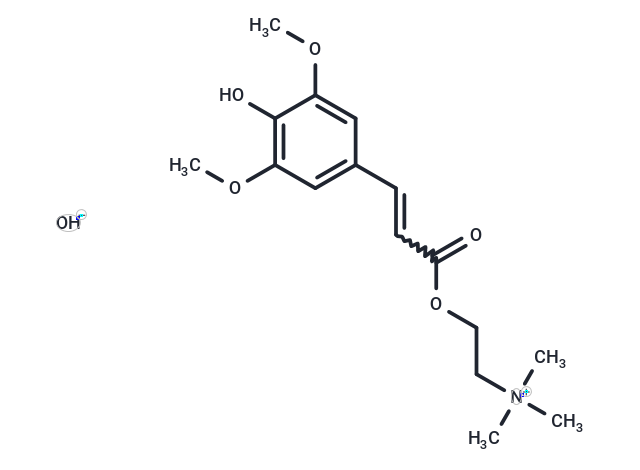Shopping Cart
Remove All Your shopping cart is currently empty
Your shopping cart is currently empty
Sinapine hydroxide, an alkaloid derived from the seeds of cruciferous plants, demonstrates a variety of beneficial properties including anti-inflammatory, anti-oxidant, anti-tumor, anti-angiogenic, and radio-protective effects. Additionally, it acts as an inhibitor of acetylcholinesterase (AChE), making it valuable for researching neurodegenerative conditions such as Alzheimer's disease, ataxia, myasthenia gravis, and Parkinson's disease[4].

| Pack Size | Price | USA Warehouse | Global Warehouse | Quantity |
|---|---|---|---|---|
| 25 mg | $1,520 | Inquiry | Inquiry |
| Description | Sinapine hydroxide, an alkaloid derived from the seeds of cruciferous plants, demonstrates a variety of beneficial properties including anti-inflammatory, anti-oxidant, anti-tumor, anti-angiogenic, and radio-protective effects. Additionally, it acts as an inhibitor of acetylcholinesterase (AChE), making it valuable for researching neurodegenerative conditions such as Alzheimer's disease, ataxia, myasthenia gravis, and Parkinson's disease[4]. |
| In vitro | Sinapine (6 or 60 μM; 1 h) effectively mitigates mitochondrial oxidative stress in cardiomyocytes, triggered by H2O2 and antimycin A[1]. Additionally, at concentrations ranging from 10-200 μM over 24 hours, it suppresses Caco-2 cell proliferation dose-responsively with minimal toxicity, enhances doxorubicin uptake by reducing P-glycoprotein (P-gp) levels, and significantly diminishes FRS2α and ERK1/2 phosphorylation[3]. |
| In vivo | Sinapine mitigates non-alcoholic fatty liver disease (NAFLD) in mice through alterations in gut microbiota composition[2]. |
| Molecular Weight | 327.377 |
| Formula | C16H25NO6 |
| Cas No. | 122-30-5 |
| Smiles | [OH-].COc1cc(C=CC(=O)OCC[N+](C)(C)C)cc(OC)c1O |w:7.6| |
| Storage | Powder: -20°C for 3 years | In solvent: -80°C for 1 year | Shipping with blue ice/Shipping at ambient temperature. |
| Size | Quantity | Unit Price | Amount | Operation |
|---|

Copyright © 2015-2026 TargetMol Chemicals Inc. All Rights Reserved.